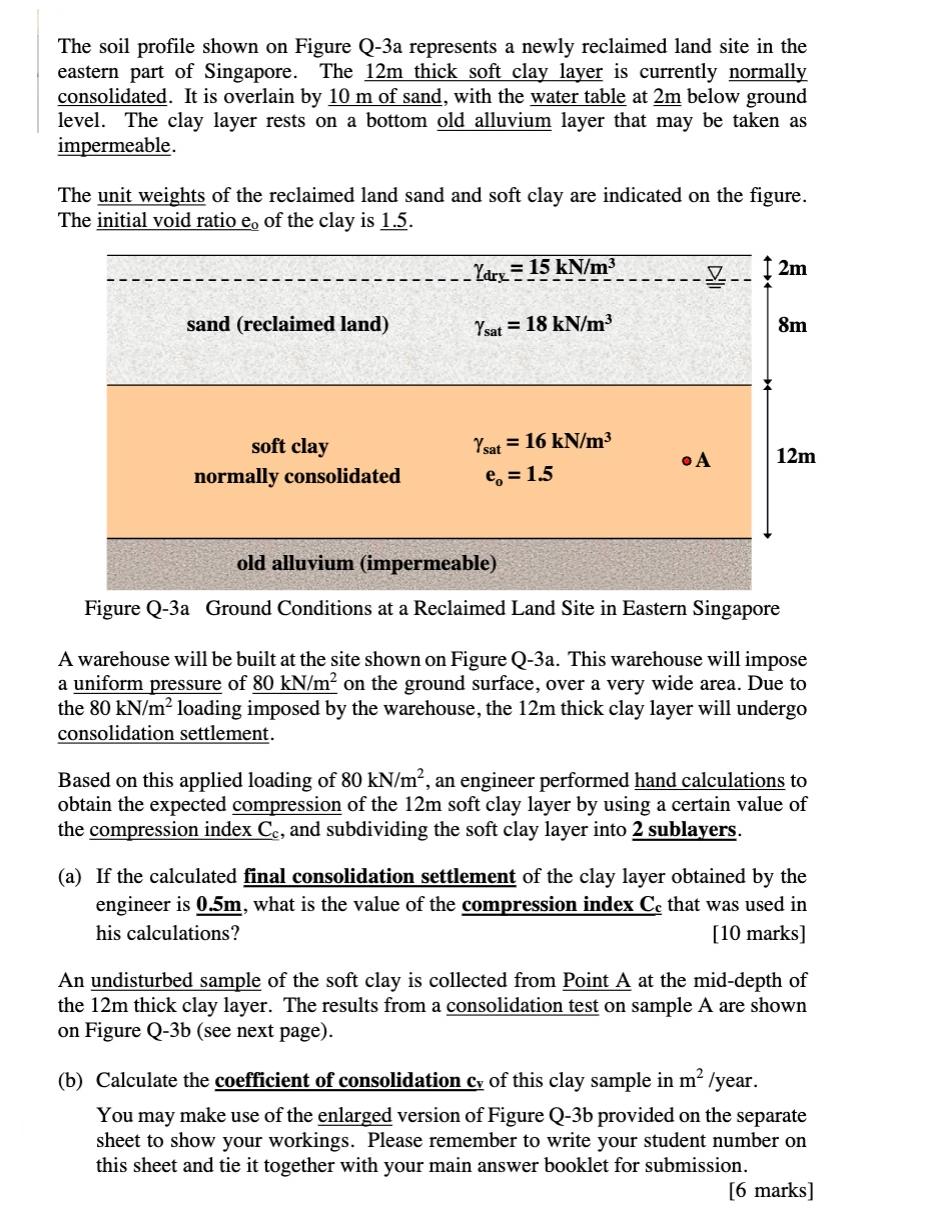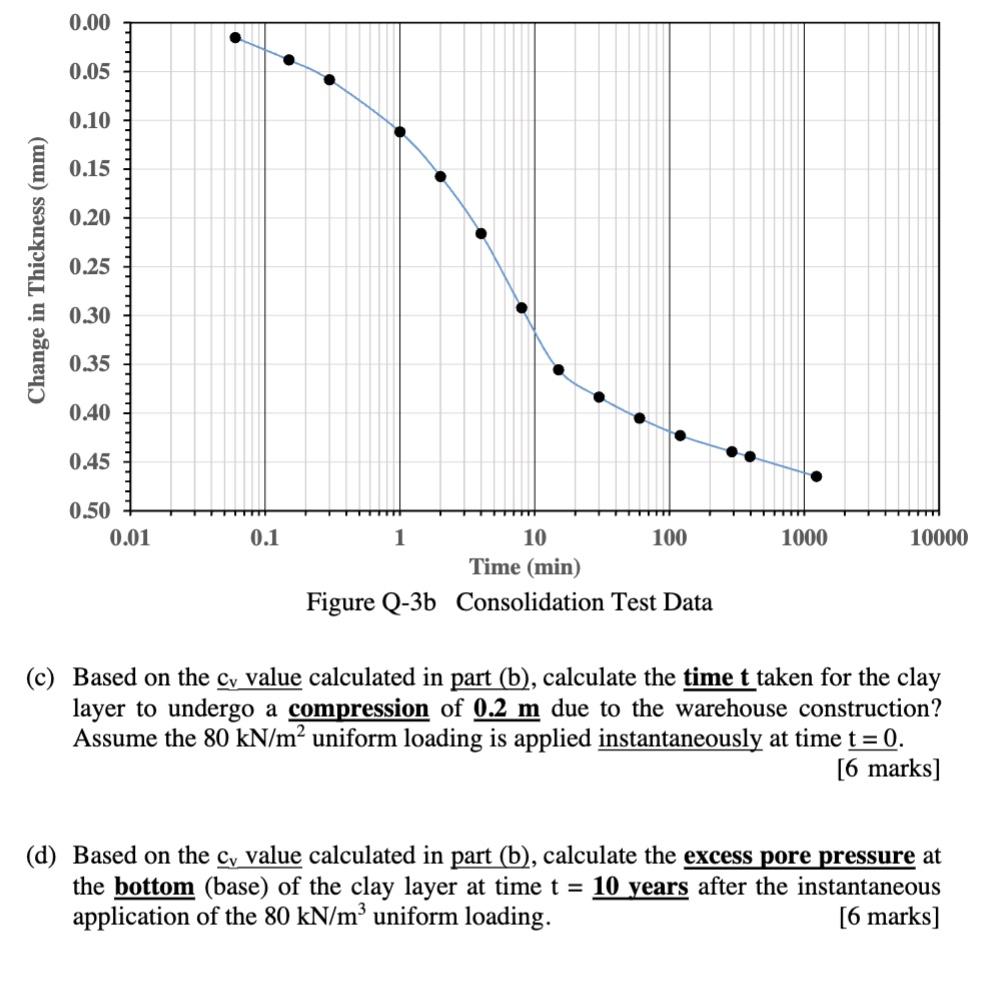Answered step by step
Verified Expert Solution
Question
1 Approved Answer
The soil profile shown on Figure Q-3a represents a newly reclaimed land site in the eastern part of Singapore. The 12m thick soft clay


The soil profile shown on Figure Q-3a represents a newly reclaimed land site in the eastern part of Singapore. The 12m thick soft clay layer is currently normally consolidated. It is overlain by 10 m of sand, with the water table at 2m below ground level. The clay layer rests on a bottom old alluvium layer that may be taken as impermeable. The unit weights of the reclaimed land sand and soft clay are indicated on the figure. The initial void ratio eo of the clay is 1.5. sand (reclaimed land) soft clay normally consolidated Ydry = 15 kN/m Ysat = 18 kN/m Ysat = 16 kN/m e = 1.5 2 A $ 2m 8m 12m old alluvium (impermeable) Figure Q-3a Ground Conditions at a Reclaimed Land Site in Eastern Singapore A warehouse will be built at the site shown on Figure Q-3a. This warehouse will impose a uniform pressure of 80 kN/m on the ground surface, over a very wide area. Due to the 80 kN/m loading imposed by the warehouse, the 12m thick clay layer will undergo consolidation settlement. Based on this applied loading of 80 kN/m, an engineer performed hand calculations to obtain the expected compression of the 12m soft clay layer by using a certain value of the compression index Cc, and subdividing the soft clay layer into 2 sublayers. (a) If the calculated final consolidation settlement of the clay layer obtained by the engineer is 0.5m, what is the value of the compression index Ce that was used in his calculations? [10 marks] An undisturbed sample of the soft clay is collected from Point A at the mid-depth of the 12m thick clay layer. The results from a consolidation test on sample A are shown on Figure Q-3b (see next page). (b) Calculate the coefficient of consolidation cy of this clay sample in m /year. You may make use of the enlarged version of Figure Q-3b provided on the separate sheet to show your workings. Please remember to write your student number on this sheet and tie it together with your main answer booklet for submission. [6 marks] Change in Thickness (mm) 0.00 0.05 0.10 0.15 0.20 0.25 0.30 0.35 0.40 0.45 0.50 0.01 0.1 10 Time (min) Figure Q-3b Consolidation Test Data 100 1000 10000 (c) Based on the c value calculated in part (b), calculate the time t taken for the clay layer to undergo a compression of 0.2 m due to the warehouse construction? Assume the 80 kN/m uniform loading is applied instantaneously at time t = 0. [6 marks] (d) Based on the cy value calculated in part (b), calculate the excess pore pressure at the bottom (base) of the clay layer at time t = 10 years after the instantaneous application of the 80 kN/m uniform loading. [6 marks]
Step by Step Solution
There are 3 Steps involved in it
Step: 1
so the value of th...
Get Instant Access to Expert-Tailored Solutions
See step-by-step solutions with expert insights and AI powered tools for academic success
Step: 2

Step: 3

Ace Your Homework with AI
Get the answers you need in no time with our AI-driven, step-by-step assistance
Get Started


